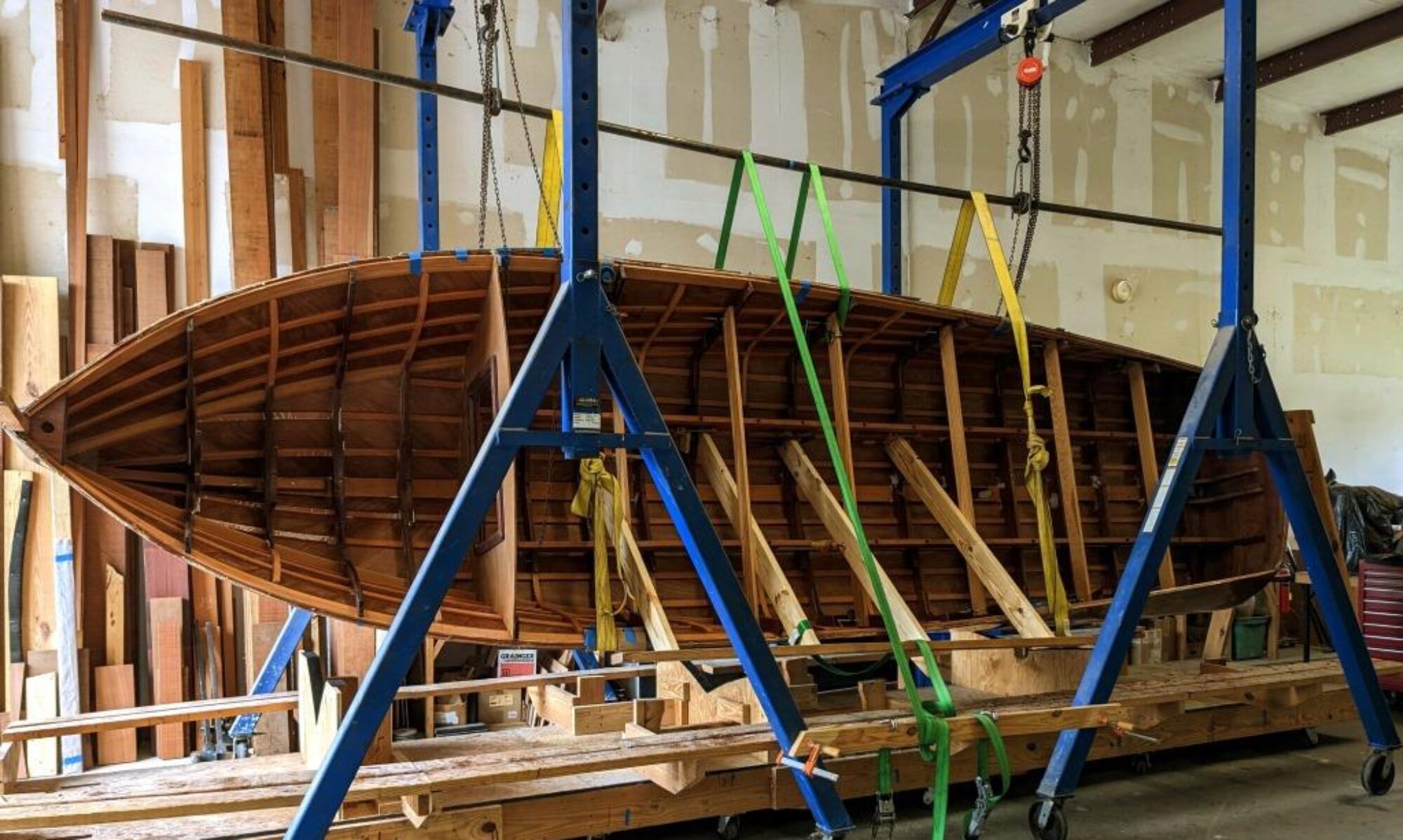
The first question is: Can you use your old fuel tank, or do you need a new one? That depends. What material is your old fuel tank made of? If it’s steel, or galvanized steel, I don’t think I’d entertain the notion of reusing one older than 5-10 years. And I’d check it thoroughly for corrosion and pinholes even then. It’s a pretty simple procedure to leak test a tank–fill it up and see if it leaks. An even better test is a pressure test–something that all plumbers do for any new plumbing they install. Simply plug it up and put a gauge on it. Then pressurize it with 5-10 psi to see if it leaks down over time.
In our case, there was no old tank in the boat, so the replacement question was answered. Next question: What shape and size? Classic boats like ours generally had a 20 gallon cylindrical tank. So that’s what we’re going back with.
Next: What material? Again, classic boats the age of ours (1949) used galvanized steel. I wouldn’t consider using that material today. You could use plastic (not very aesthetically pleasing to the traditionalist, or you could go with aluminum, which is the common choice for these type boats.
Aluminum is a much better choice than steel for its resistance to corrosion. But you still have to be careful here. There are some types of corrosion that will affect aluminum. Poultice corrosion is one that’s particularly bad with aluminum when you have stagnant water that is held in contact with aluminum for long periods. Also, aluminum is pretty susceptible to galvanic corrosion, being a very anodic metal. You have to be careful to either isolate aluminum from other, more noble metals, or protect it with a sacrificial anode. In our case, it will be easy to isolate the tank, since all connections to it will be by rubber fuel hose, and it will be mounted to a wooden hull.

We’ll mount the fuel tank in the extreme rear of the engine compartment, on two blocks cut to the curve of the tank that rest on the stringers. Notice in the picture that the stainless steel straps ride on non-porous neoprene straps glued to the tank with 3M 5200 marine adhesive. This will keep water from getting in between the straps and the tank, which is a recipe for poultice corrosion. Notice also, that I made the steel straps so I could adjust the tension on them.
Finally, I should mention that a metal tank should be grounded. This tank, and the filler tube are both grounded to the negative buss on the boat.

Where is the tank from or who made it?
Hi Brent,
Unfortunately I can’t remember who produced the tank. But a quick internet search should give you a few possibilities. You can also check the ads in WoodenBoat and Classic Boat magazines.
I got my replacement 5ank (1953 Chris Craft 17′ Sportsman) from Rayco in KY. raycotanks.com